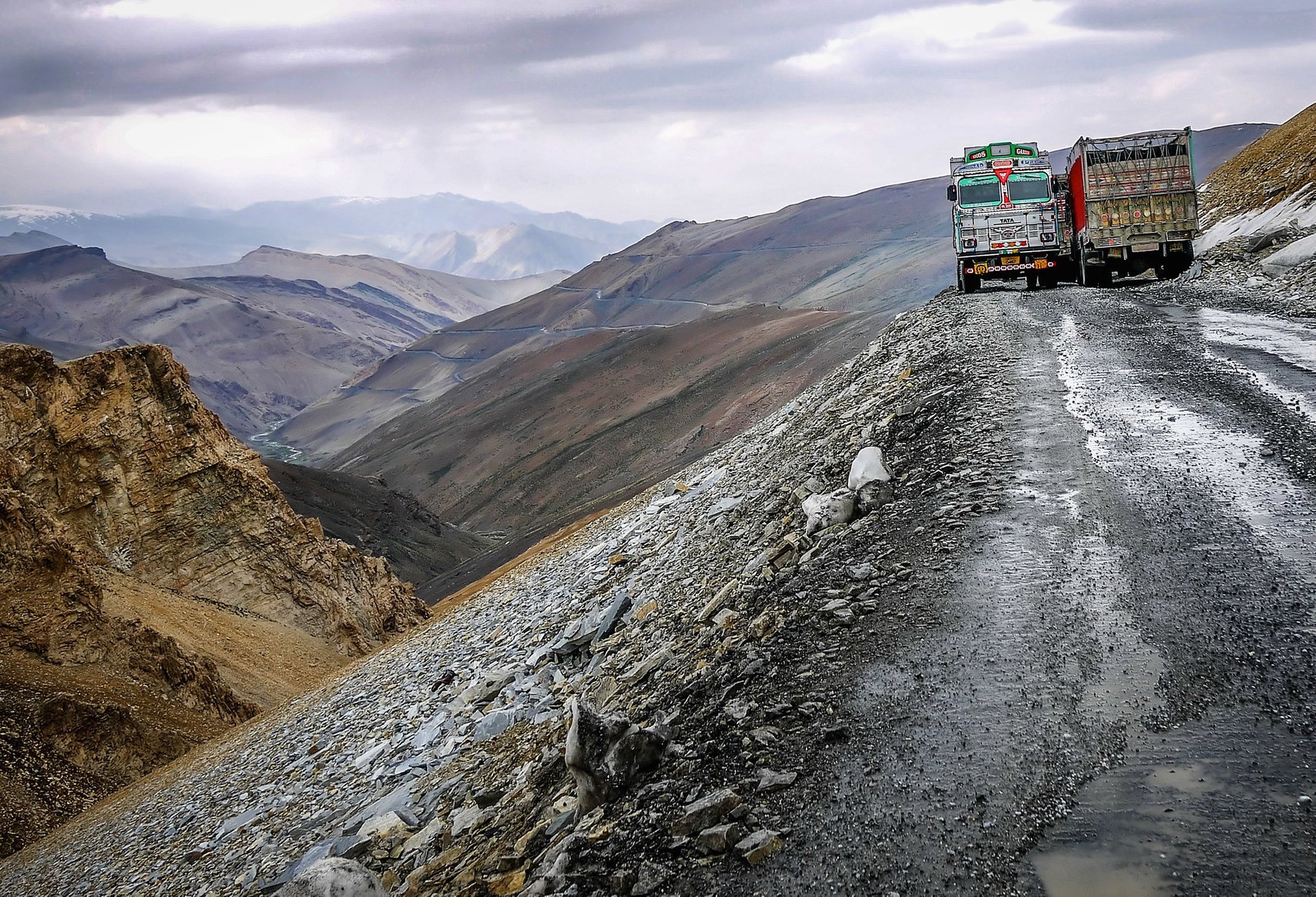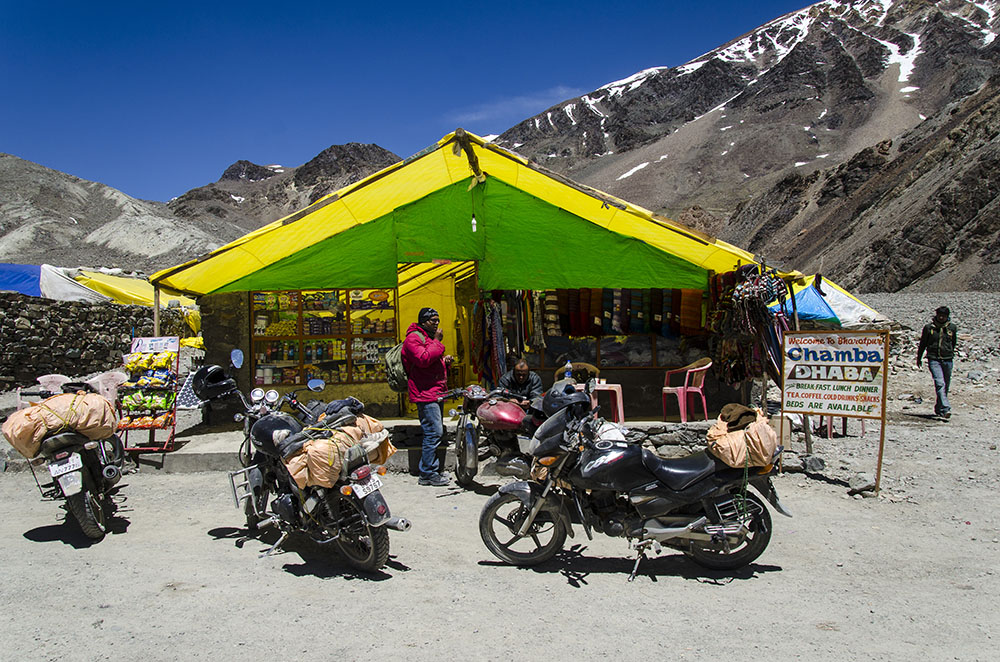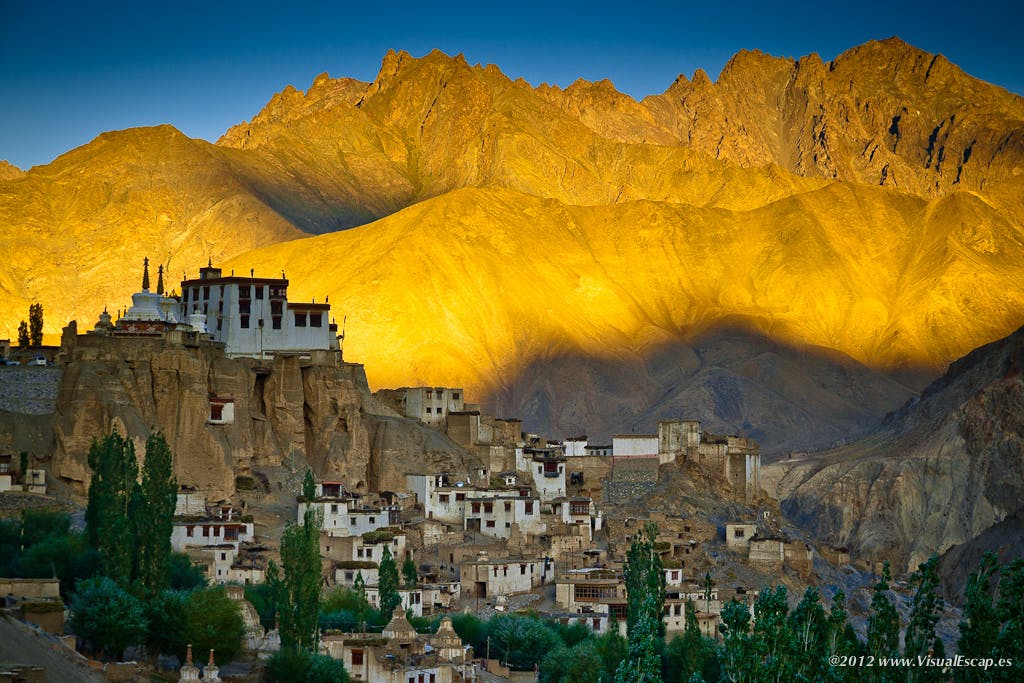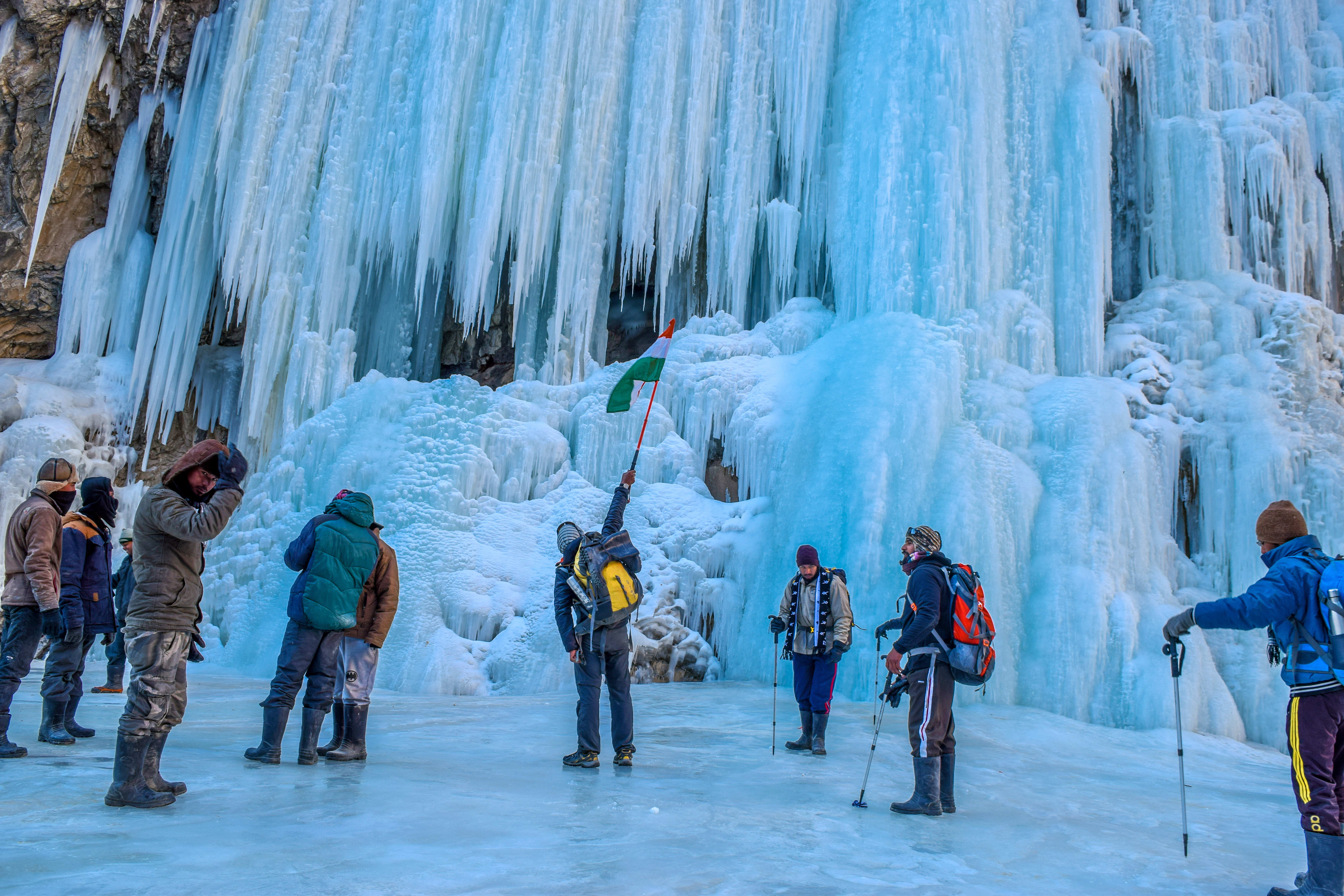My Trip to Indian Himalayan Mountains
When we decided to come to the Indian Subcontinent, we were sort of hoping to make it to Nepal. However, in consideration of all there is to see in India and the somewhat questionable political situation in Nepal, we decided to see the Himalayan portion of India as a substitute. Given the onset of fall, though, we needed to get up there ASAP. So, during our stay in Delhi, we bought bus tickets up to the town of Manali where we could get a shared jeep up further into the mountains.
Because the journey to Manali was 15 hours and overnight, we put quite a bit of effort into getting a "deluxe" bus for the trip. Nothing is easy in India, though, and in spite of our efforts, we ended up on a pretty mediocre bus (and overpaid). We could will sum up the ride as hot, uncomfortable and bumpy, the countryside offered a cornucopia of interesting smells and the bus staff was pretty surly.
We arrived in Manali (pretty tired) around 10 a.m. We got off the bus and started walking into town to figure out our plan for getting from Manali to the small city of Leh, which is located in the Ladakh region, up in the mountains near Kashmir. One of the more persistent hotel touts who had met our bus started chatting with us and did his job well - we ended up booking a spot in one of his jeeps to Leh and staying in his hotel until the jeep left around 2 a.m. the following morning (16 hours later). We spent the day getting organized, went to bed around 7 p.m. and then woke up around 1 a.m. to get ready for the arrival of the jeep. We were the first to be picked up and ended up spending about an hour going around town slowly picking up the rest of riders. Finally, around 2:45 a.m., we started out of town.
We decided to book the two "seats" in the front of the jeep with the driver, despite being a bit skeptical about there being enough room for three adults and the stick shift. We should have listened to our instincts and experience, though, as (no surprise) whoever sat in the middle had the stick shift poking into a leg whenever we were in second gear. And because the road from Manali to Leh is one of the highest in the world and involves a lot of hills, we were in second gear a lot. On the other hand, four grown men were sharing the jeep's middle row, so we probably shouldn't complain too much.
So, as we started climbing into the mountains, we tried to sleep a little, but it was pretty hard, between the hills, the winding road and the stick shift. Then, around 5 a.m., just as we were both dozing off, we came to a sudden stop. An oncoming truck had broken an axle on the bumpy road and was blocking both directions of traffic on a narrow curve. So, our driver put his seat back and went to sleep, and the rest of us began to wait. We watched as the guys from the truck hunkered down and built a fire by a tire, which seemed to serve as much for heat as it did for a light source as they contemplated their axle. As jeeps and trucks lined up on either side, lots of people got out to help them, as they all had an interest in getting the truck out of the way as soon as possible. Somewhat surprisingly, they managed to get the truck moving by around 7 a.m. and our journey resumed.
We made our first food stop fairly soon after that and had a typical North Indian breakfast - a sort of Pancakes thing made from potatoes and flour (called a Parantha), served with pickled vegetables and yogurt. We had just discovered them a few days before and had liked them, so we each had one and then got on our way with our group. It was daylight then, so we were able to appreciate the really spectacular scenery we were passing through - snow-capped mountains in every direction, green hills below, a beautiful turquoise river... The jeep didn't seem too bad right then.
A few hours later we stopped again for food - maybe two breakfasts is standard? - where Jeff decided he might as well have another Parantha. Then back on the road and higher into the mountains. Around this time our trip was interrupted by the second vehicle breakdown. This time it was a jeep, and though it wasn't blocking our path, our driver and others behind us stopped to help the unfortunate jeep out. It turned out the jeep's belt had broken and they didn't have a spare. So, somebody found a shoelace and it was duly inserted where a belt once had been. Not surprisingly, this fix lasted about a kilometer before it broke. We stopped again for another fix - this time with some nylon cord. It lasted a little longer than the shoelace, but the jeep didn't make it too far. This time, our driver elected to keep going, which was good for us - we were already hours behind on a very long trip.
As we continued on, we began hitting a lot of road construction (go figure), which delayed us further, but we eventually made it to a little town for lunch ("town" used loosely here - basically a couple of roadside tents cooking food for road workers and jeeps). Again, Jeff figured he might as well have another Parantha... A few hours later (probably around 3 or 4 p.m.), with about half of the kilometers and several hours on the road to go, he started feeling sick, which made the rest of the trip for him a sort of delirious bad dream. Stupid Paranthas. The road just kept going on and on, and we were delayed by construction, another truck breakdown and more. In the best of circumstances, it was a rough ride...
We finally rolled into Leh around 10:30 p.m., completely exhausted and cold (altitude over 10,000 feet). All we wanted was to crawl into the most comfortable bed in town. But, as luck would have it, the one time we really wanted a rickshaw or taxi, there wasn't one to be found. The bus station was pretty far from the rest of town, so we ended up going with the only option offered, which was a ride with a guy trying to fill up rooms in his hotel. It was certainly not offering the comfort we were hoping for, but at least it was cheap. We decided to stay the night and look for a new place in the morning.
The next day, we headed to a guesthouse that sounded good and found nobody around except for an old Ladakhi woman who didn't speak English. She said all sorts of stuff to us in Ladakhi that we didn't understand, but we decided to stick around the place until her English-speaking relatives came home. The wait was worth it, because the room ended up being great. The guesthouse was set away from the center of town, surrounded by small fields with grazing yaks, bounded by rustic stone walls. We had a private balcony with views of snowy mountains and Buddhist monasteries on hillsides. It was a good thing we liked it, because we ended up spending a lot of time in our room for the first four or five days; Allison quickly followed Jeff with stomach problems and got a cold as an extra bonus.
Leh (and Ladakh) is incredibly different than the rest of India. The area used to be part of Tibet, so the people look Tibetan, speak a language closely related to Tibetan, eat food that is similar to Tibetan and are primarily Buddhist. We really loved being there - the people were really happy and friendly, constantly shouting out "Jullay" (which means hello, goodbye, please and thank you) to each other and the area's many visitors. The area is also really environmentally conscious, banning all plastic bags, and has lots of organizations promoting its traditional way of life in the face of the increasing presence of outsiders. Additionally, it was such a relief to be back in mild weather and to see the onset of fall (we've been so out of touch with North American seasons that seeing leaves changing colors was really great).
In addition to recovering from illness, we took some good walks through really beautiful fields (stone walls, yaks and cows, nice little kids) and visited a few local monasteries during our stay in Leh. We also took a 5-day side trip to the area west of Leh to see several monasteries and villages off the road leading to Kashmir, which was great. Got a taste of traditional Ladakhi life, stayed in some cute family-run guesthouses and enjoyed seeing the monasteries, which seem to have barely changed in centuries. We also will remember one Saturday morning when we heard an enormous boom as we were eating breakfast. We thought it was strange - our only guess was that a road crew was dynamiting in the area or that the military (lots of army in this area, as it is close to both Pakistan and Tibet/China) was doing some sort drill.
After returning to Leh from our monastery trip, we started organizing to get back to Manali. The Manali-Leh road closes once the snow sets in for the winter, and we were getting nervous at the site of increasing snow in the mountains, as well as the increasingly cold weather (who would have thought how much we'd use our hats and scarves on this trip...). Ultimately, we found a jeep to share with a German guy and an Indian family and did a reverse trip through the middle of the night and all of the following day back to Manali. Another bumpy, though beautiful trip, but thankfully without as many delays (that hour and a half when a bridge was closed for repairs being the only major one...). We also avoided the restaurants on the way and stuck to cookies, apricots, juice and water.
Guest Post: Allison And Jeff's








Thank you for sharing your incredible journey through the Indian Himalayan Mountains! Your post beautifully captures the adventure and majesty of the region. I’m curious, have you encountered any of the most dangerous roads in India during your travels? The Himalayan roads are known for their thrilling and treacherous routes, adding to the excitement. Looking forward to reading more about your adventures!
ReplyDelete